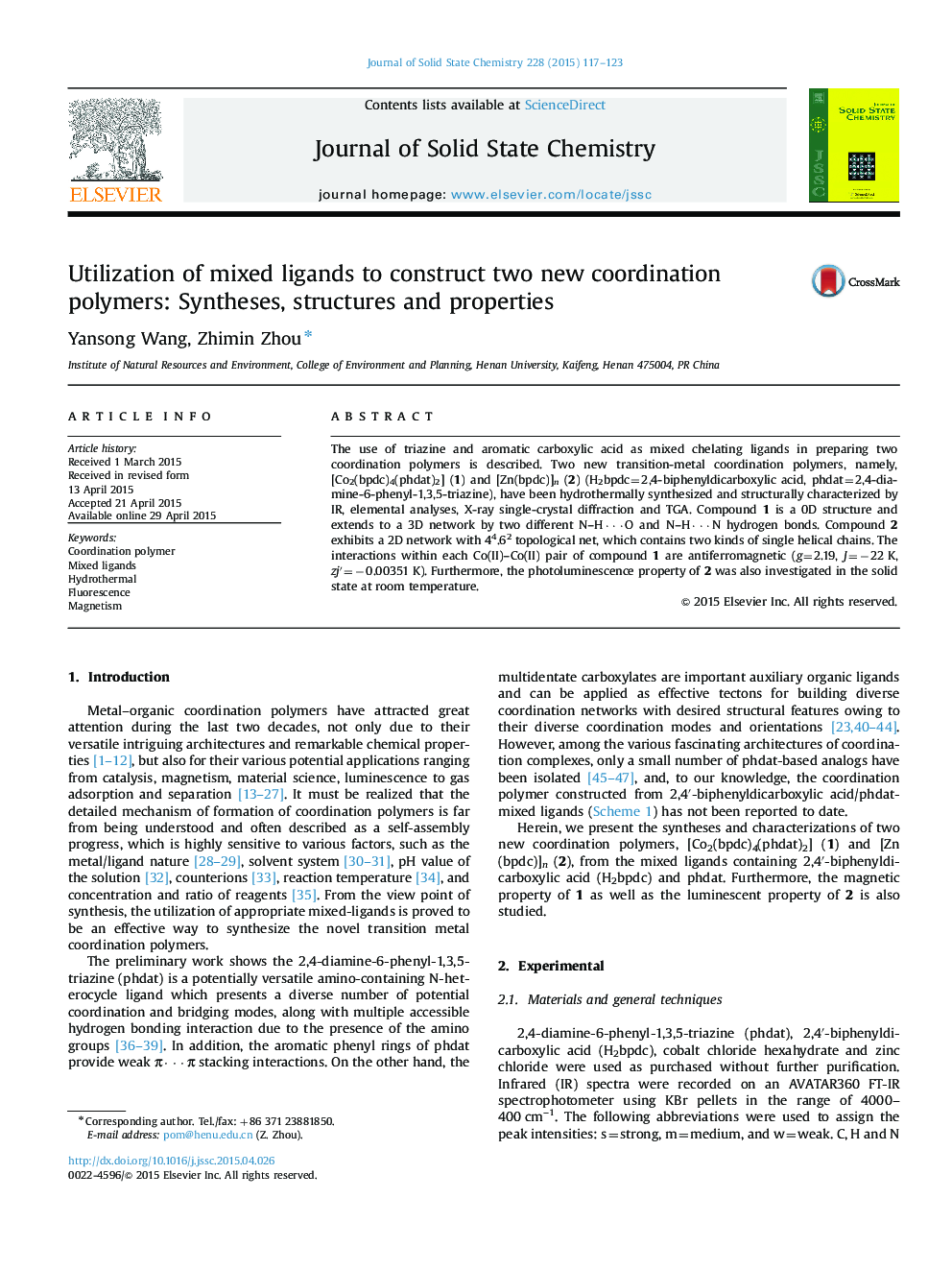| کد مقاله | کد نشریه | سال انتشار | مقاله انگلیسی | نسخه تمام متن |
|---|---|---|---|---|
| 1331496 | 1500088 | 2015 | 7 صفحه PDF | دانلود رایگان |
• The first bpdc2−/phdat-based 0D discrete coordination complex.
• A new 2D architecture with two kinds of helical chains.
• The structure-dependent magnetism and photoluminescence properties.
The use of triazine and aromatic carboxylic acid as mixed chelating ligands in preparing two coordination polymers is described. Two new transition-metal coordination polymers, namely, [Co2(bpdc)4(phdat)2] (1) and [Zn(bpdc)]n (2) (H2bpdc=2,4-biphenyldicarboxylic acid, phdat=2,4-diamine-6-phenyl-1,3,5-triazine), have been hydrothermally synthesized and structurally characterized by IR, elemental analyses, X-ray single-crystal diffraction and TGA. Compound 1 is a 0D structure and extends to a 3D network by two different N–H···O and N–H···N hydrogen bonds. Compound 2 exhibits a 2D network with 44.62 topological net, which contains two kinds of single helical chains. The interactions within each Co(II)–Co(II) pair of compound 1 are antiferromagnetic (g=2.19, J=−22 K, zj′=−0.00351 K). Furthermore, the photoluminescence property of 2 was also investigated in the solid state at room temperature.
Two polymeric metal compounds based on mixed-ligands were synthesized and characterized. The use of different metal ions results in distinct structures. The magnetic and fluorescent properties were also studied.Figure optionsDownload as PowerPoint slide
Journal: Journal of Solid State Chemistry - Volume 228, August 2015, Pages 117–123
